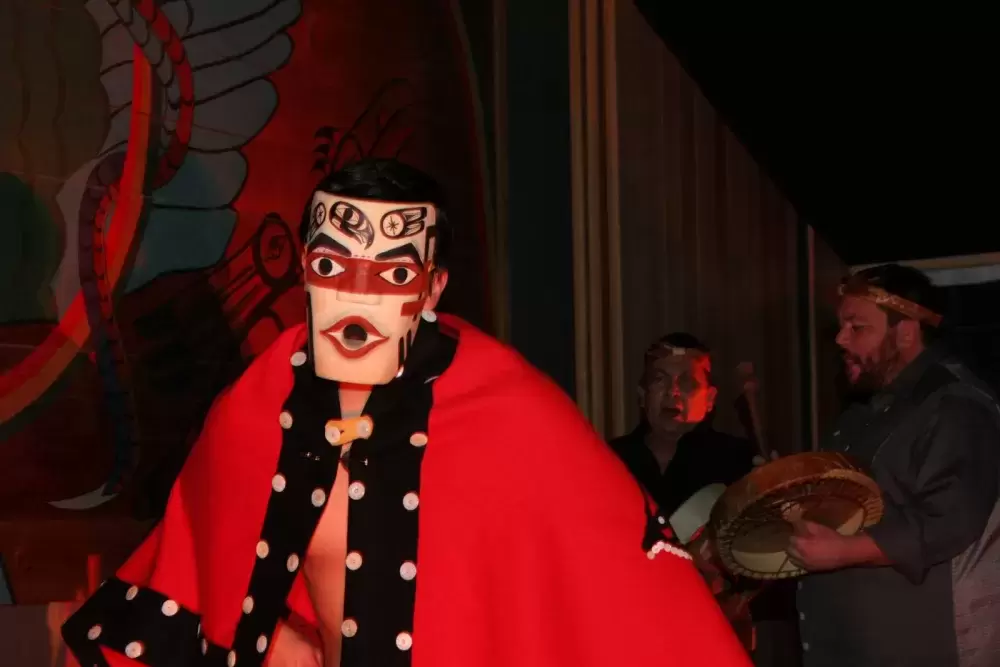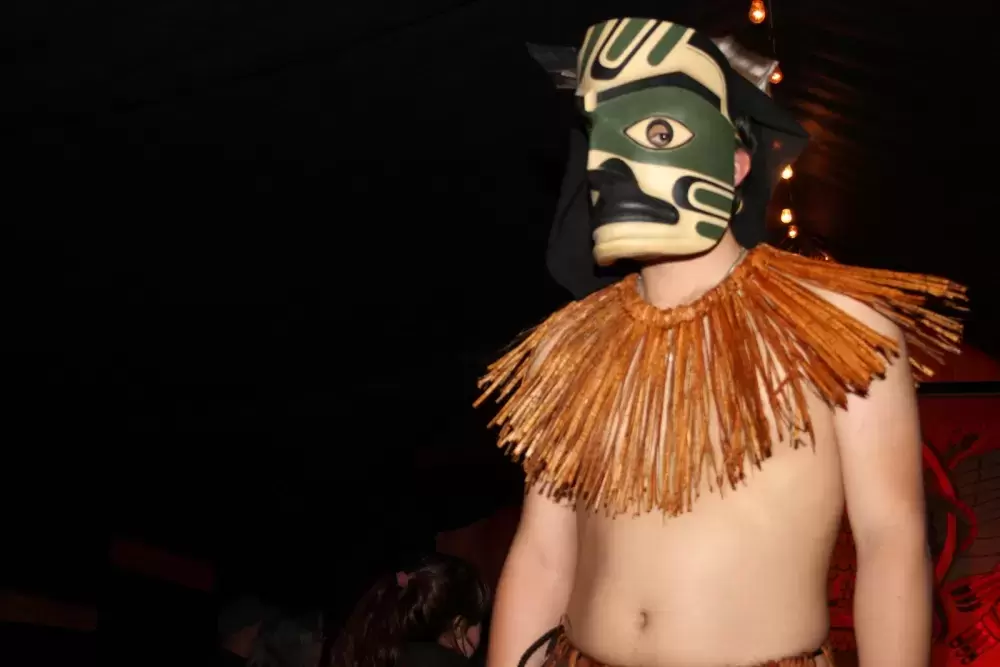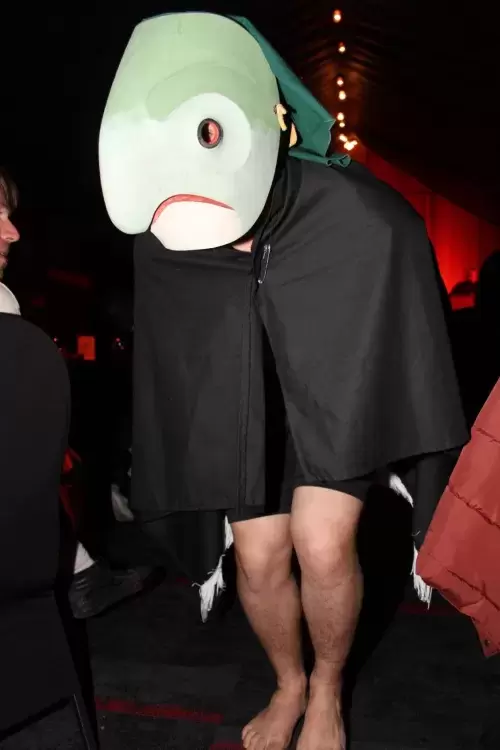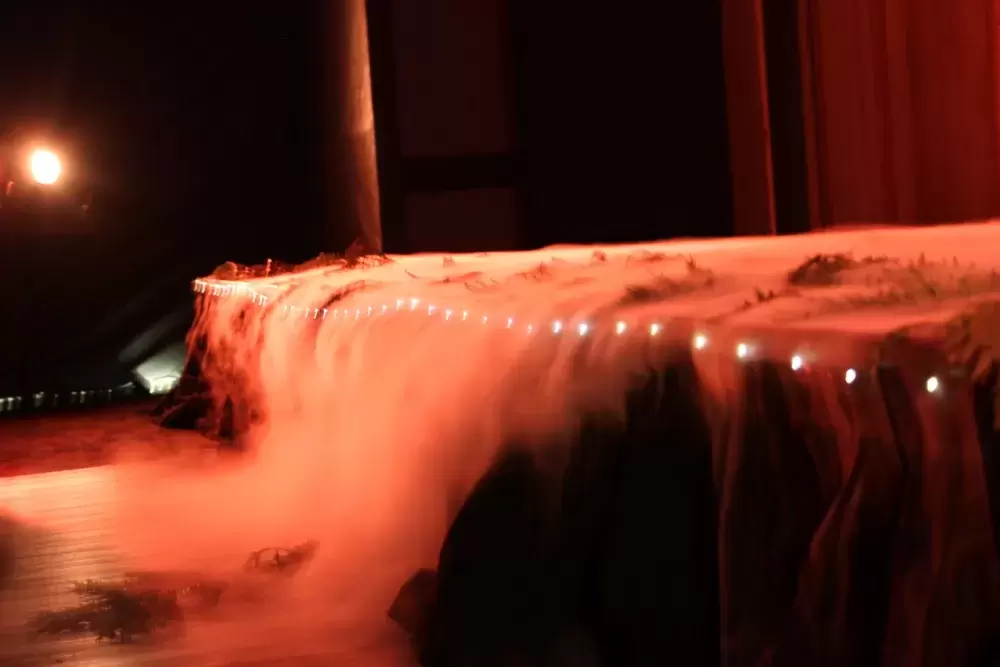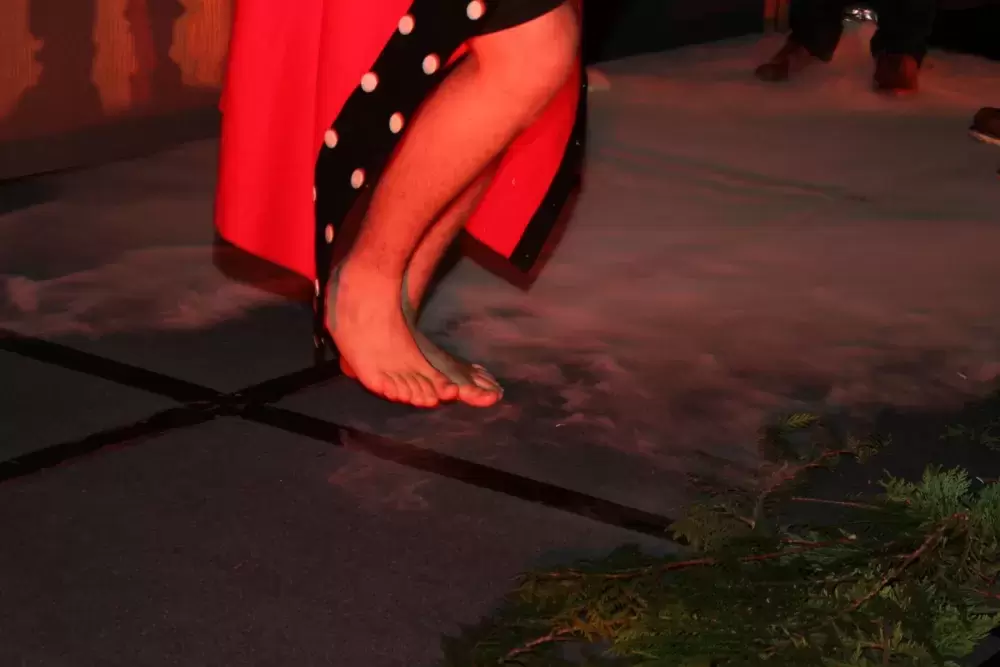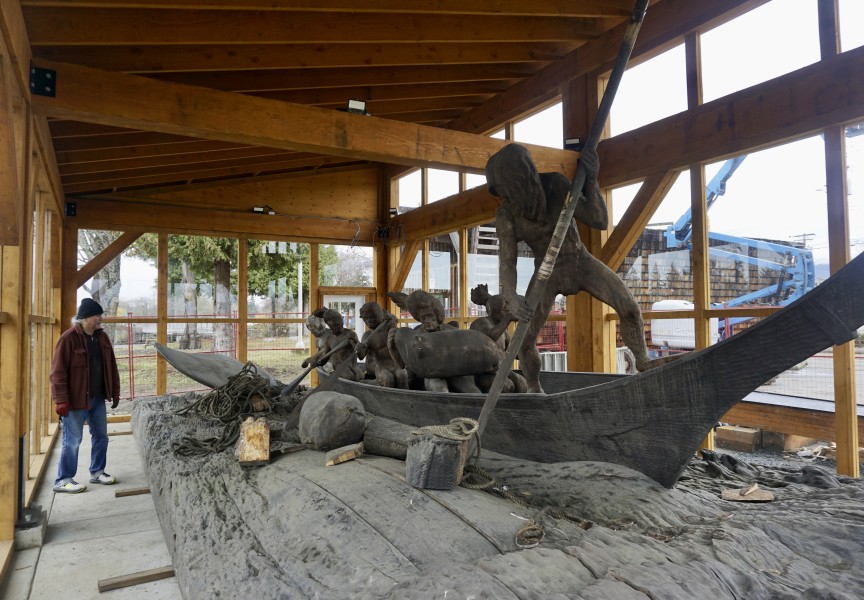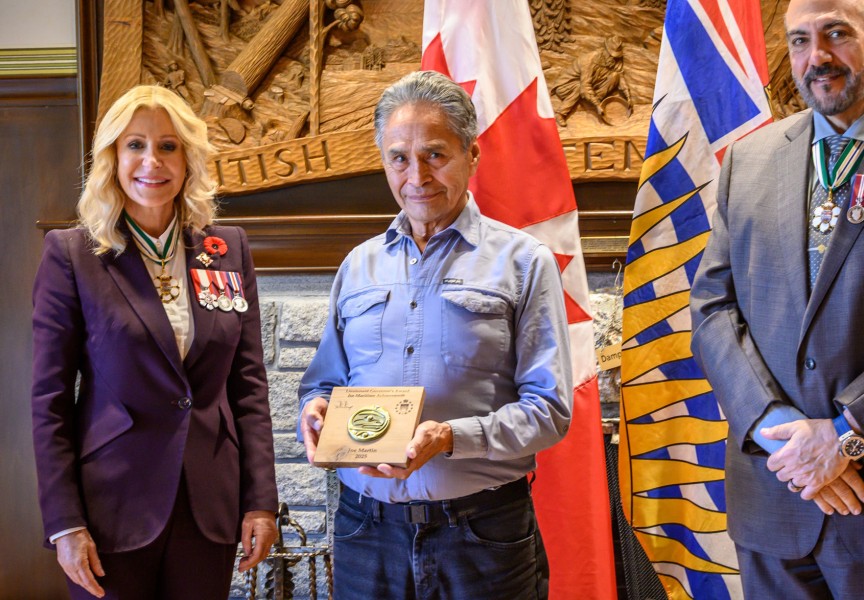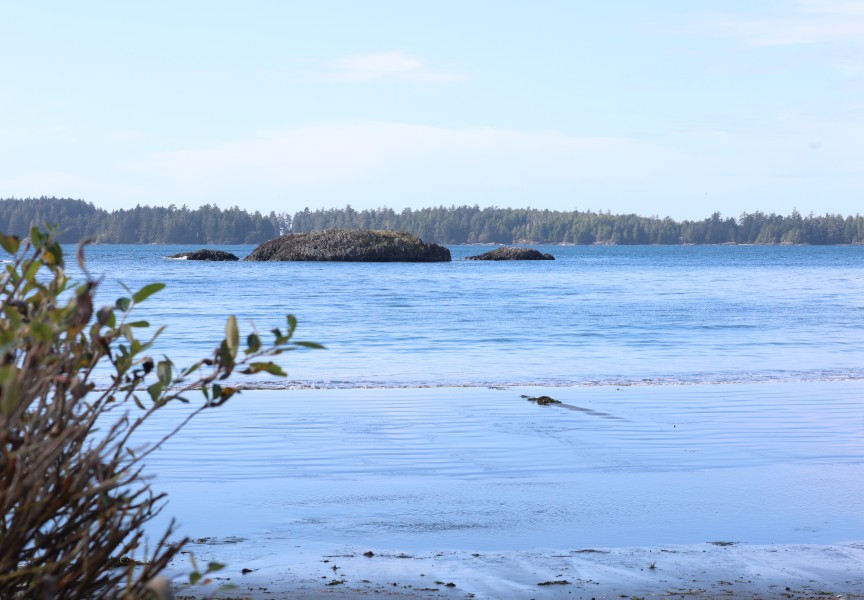Timothy Masso and Hjalmer Wenstob have spent over a decade working together and collaborating on traditional masks, dances, and songs. In the recent years their collaborations have been used to share Tla-o-qui-aht culture with others. At Naaʔuu the two brothers shared their First Nation’s history, and their family connections.
During the first four evenings of Naaʔuu Wenstob is host; for the remaining evenings fellow Tla-o-qui-aht member Terry Dorward of the Seitcher family will stand before the audience.
On March 16 Wenstob and his family welcomed community members into a room made to resemble a traditional longhouse, sharing their Tla-o-qui-aht culture.
“Every family has a different history in Tla-o-qui-aht,” said Wenstob. “We want to really highlight and elevate our territory through this.”
In addition to the Salmon, Bear, and Guardian masks that were made by world renowned Tla-o-qui-aht carver Joe David, Wenstob and his family showcased three more masks accompanied by fun songs.
Wenstob said that because historically Nuu-chah-nulth didn’t have a written language, moments in time were recorded through carving, art, and oral histories.
“It was a way of recording that point in history to tell it so it wouldn't be forgotten,” said Wenstob, reflecting on a Tla-o-qui-aht mask carved in response to smallpox.
When the pandemic hit, Wenstob and his brother set out to create a Covid mask and song.
“When Covid hit our communities took it very seriously. It wasn't the first pandemic our people have faced, and we weren't going to let those numbers be as atrocious as they were the first two or three that we've faced already,” said Wenstob.
Wenstob called his brother and said, “We have to record this point in history, we can't write it down. We have to record it properly.”
With inspiration from the smallpox and Pookmis mask, which depicts a drowned whaler, Wenstob carved a mask out of red cedar that would be danced. The mask is equipped with two moveable hands that open and cover the sickly mouth.
When Masso set out to write the Covid song that would pair with the mask, he decided he wanted a healing piece.
“When we set out to write a song we think about what our end goal is [and] think about what we want to really achieve with that song,” said Masso.
He started out with sayings such as “let there be no sickness” and “help us.”
“Nuu-chah-nulth is a really complex language that doesn’t really allow for direct translation,” Masso cautioned.
He consulted with elders to find Nuu-chah-nulth words that would fit. Once they had the words and phrases, over Zoom Wenstob and Masso figured out a beat and tune.
For the language mask, Masso said they wanted to demonstrate the connection between language and art.
“[Wenstob], and I sat down and we talked about how can we show language coming back in a mask, and that was something that was kind of hard to explain,” said Masso.
To showcase this, the mask has two pieces; one with a mouth, the other without one.
“Halfway through the dance, do a transformation where we have a mask below that has a mouth to show that our language is coming back, we're now able to speak,” said Masso.
Due to the way the dancers move and hold the masks, Wenstob used alder, which dries to be a hardwood.
“We use alder because then we can get it really thin and really light,” said the carver. “You can dance two masks at once and they're light enough to hold together.”
The two masks and the transformation symbolize the history of generations who were not allowed to speak their language, to those who now are reviving their dialects, shared Wenstob.
The raven mask, made of red cedar, was specifically carved to be interactive at Naaʔuu, said Wenstob. They designed it so that it could be danced through the longhouse.
“We've always found a raven as such a curious creature,” said Masso. “There's lots of stories about how the raven stole the sun and then is always trying to find something that is the next big thing.”
“For me as a dancer, [it’s] really exciting to have a mask that the mouth opens up and you can get closer and get really involved with people,” he added.
During Naaʔuu, Masso playfully dances through the crowd stealing forks and phones off tables with the beak of the raven.
When Wenstob carved the raven mask, he made it as long as his brother, Masso, was tall. Due to how heavy the mask is, it’s tied down to Massos back to counterbalance.
Wenstob explained that with the raven mask, he carved it while also receiving insights from his brother.
“It's not really just about me carving a sculptural work, it's about something that’s going to be danced, [and] it has to be weighted properly,” said Wenstob.
Though Wenstob carves the masks and Masso writes and dances the songs, both brothers agree they are collaborating on all aspects of creating cultural pieces, said Wenstob. The whole family is involved, he continued.
“[It’s] such an inspiring thing for [brothers] to work together like this,” said Wenstob.
The remaining dates for Naaʔuu are March 22, 23, 24, 25, 30 and 31. Tickets can be purchased online.

